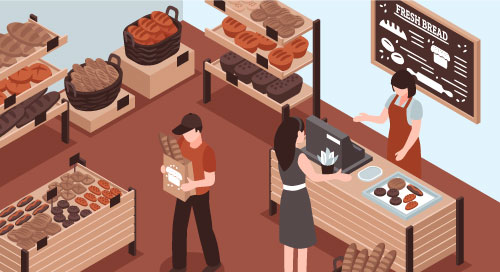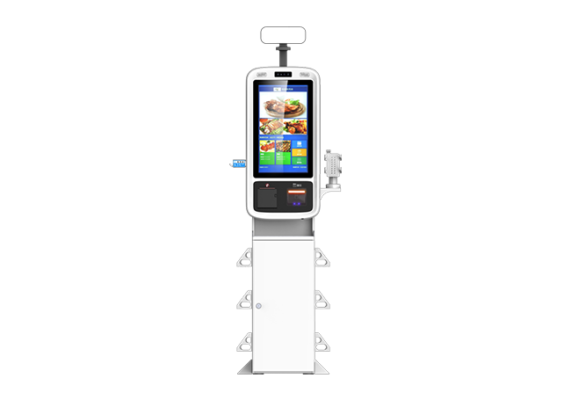Fill form to unlock content
Error - something went wrong!
Stay up to date with the latest IoT and network edge news.
Subscribed.
Self-Service POS for Touchless Checkout

Self-service POS is common—but traditional systems aren’t always a good match for retailers' changing needs like eliminating long waits and providing zero-touch checkout.
The process of weighing and scanning products without barcodes can be painstakingly slow for customers. In bakeries, for instance, the challenge can be greater if employees need to recognize and remember hundreds of baked goods. A busy bakery may require counter staff to touch every item, look up prices, and ring up each one individually. All while customers wait in long lines.
Luckily, companies like Wintec, a provider of smart retail solutions, recognize the faults of existing self-service systems. And by combining compact POS designs, AI, and computer vision, they help make self-checkout faster, touch-free, and convenient.
Self-checkout systems like the smart Wintec’s Selfpos60V are a win-win no matter the business type. From bakeries and cafés to convenience shop and supermarkets, the Selfpos60V checkout solution is beneficial for both owners and customers. AI-enabled POS systems with computer vision can be trained to recognize the subtle differences between items, such as a plain croissant or one with chocolate—often better than the human eye (Video 1).
AI-enabled POS systems with computer vision can be trained to recognize the subtle differences between items, like a plain or chocolate croissant—often better than the human eye. @Wintec_China
Computer Vision + AI = Smarter Service Kiosks
To achieve this accuracy starts with taking hundreds of photos of each product from different angles. Wintec's team uses the images to train the machine learning model to recognize each item. The AI is self-learning, meaning that it increases in accuracy over time.
“The Intel® OpenVINO™ Toolkit makes it easier to integrate the recognition module into actual applications," said Ivy Zuo, VIP Business Manager at Wintec. “This accelerates the processing of the products to be installed on-site. And it ensures that products are recognized very quickly and accurately.”
Meeting customer demands is even more critical today, but old-school traditional self-checkout terminals aren't rising to the challenge. "The main payment methods for these terminals are card or cash," said Zuo. "They require many operation steps from the customer, like finding their card, inserting their card, inputting their password, or putting in cash. All of these increase the time of the checkout process."
Shrink the Footprint, Expand the Benefits
Bulky self-checkout terminals are not a good choice for retailers with limited floor space. The new AI-enabled systems have a smaller footprint—thanks to Intel® NUCs, which let Wintec design terminals that are compact, sleek, and modern-looking as shown in Figure 1. "The self-checkout system becomes a part of the décor, which attracts more customers to use it instead of standing in line for the cashier," said Zuo.

The Wintec solution goes well beyond self-service in bakeries, produce markets, and convenience stores. A whole range of retail applications benefit from the SelfPoS system. Pharmacies are a good example, as customers and cashiers may be especially concerned about human interactions.
In China it is common for people to use their social security card instead of a debit or credit card to make purchases. Using facial recognition enables an automatic link between customers and their social security accounts. This means that even if they forget their social security card, they can still purchase medicines with touchless checkout. And if a shopper needs approval for a medication, the Selfpos60 can even connect the customer to a doctor via a video call using the embedded camera.
In any retail environment—where health and safety are essential—the benefits of computer vision and AI are clear. When you can leave your wallet at home, facial recognition is seen as a convenience. And compact, no-touch POS terminals are making touchless checkout a real possibility.
This article was edited by Christina Cardoza, Associate Editorial Director for insight.tech.
This article was originally published on June 9, 2020.